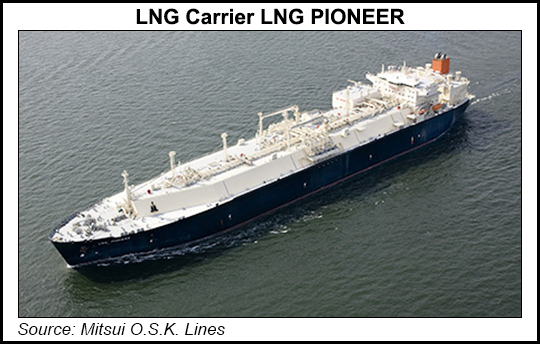COLUMN: An Explanation of Shipping, LNG’s Pipeline on Water — Bonus Coverage
You need some serious tonnage to move vast quantities of super-chilled natural gas from one continent to another. The massive ships used to transport liquefied natural gas (LNG) add another element to the export trade that can’t be overlooked for those who want to better understand the market.

The world’s LNG tanker fleet ranges in size and propulsion systems, but most modern vessels are capable of carrying about 3 Bcf of natural gas on average and are powered by dual-fuel systems that can run more efficiently on fuel oils or gases. Today’s largest ships can carry about 6 Bcf and are employed by Qatar, the world’s largest LNG producer.
Ship owners like Dynagas LNG Partners LP, Mitsui O.S.K. Lines and Hoegh LNG AS, to name just a few, charter their vessels to traders and LNG producers that sell the commodity. Larger portfolio players that have operations throughout the LNG value chain such as BP plc, Royal Dutch Shell plc and Total SA own ships too.
Shipbrokers like Fearnleys AS, Clarkson plc and Affinity Shipping LLP act as intermediaries and pair shipowners with those who want to charter their vessels to transport goods.
To read the full article, and gain access to more in-depth coverage of a fast-growing and increasingly important part of the North American natural gas industry, check out NGI’s LNG Insight.
© 2024 Natural Gas Intelligence. All rights reserved.
ISSN © 1532-1231 | ISSN © 2577-9877 |
